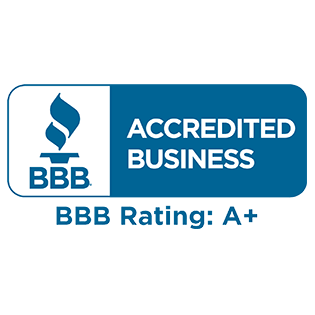Asbestos Companies
Called one of the largest human-made epidemics in history, asbestos use has left a legacy of illness in hundreds of thousands of American families. For decades, the number of asbestos victims kept piling up.
However, this crisis could’ve been prevented if asbestos companies hadn’t intentionally covered up the dangers of asbestos exposure.
Call (800) 326-8900 now for a free consultation. If you or your loved one has mesothelioma, you may be entitled to compensation from the company that exposed you to asbestos.




Holding Companies Accountable with Asbestos Lawsuits
From the Industrial Revolution through the 1980s, many companies used asbestos in manufacturing without significant regulation — failing to provide appropriate protective equipment or even warn employees about the risks.
Thousands of employees have suffered asbestos exposure at their workplace, causing many to develop serious asbestos-related diseases like mesothelioma.
Because asbestos companies knew the risks of their products, families nationwide have turned to filing asbestos exposure lawsuits for justice.
Asbestos Companies & Litigation at a Glance
- It’s well-documented that asbestos companies knew about the dangers of asbestos but hid this information from workers to protect their profits.
- Some companies covered up the truth for decades before their negligence was exposed.
- Employees and their families can file mesothelioma lawsuits against asbestos companies to hold them accountable for their dangerous products.
- Bankrupt asbestos companies have set an estimated $30 billion aside in trust funds to pay victims for their illnesses.
As a leading national mesothelioma law firm, Simmons Hanly Conroy has successfully helped thousands of families take action against asbestos companies, securing over $9.9 billion nationwide.
Firm Partner Perry Browder has even secured the largest verdict against a single asbestos company in the history of mesothelioma litigation, which was worth $250 million.
List of Companies that Used Asbestos
For decades, many major companies across the United States used asbestos in their products. As a result, thousands of people encountered the substance at their workplace.

“The dangers of asbestos were known to these companies for decades, and they did nothing to inform or protect people.”
– Melissa Crowe Schopfer, Firm Partner
Browse our partial list below of companies that made, used, or sold asbestos-containing products. If you worked for one of these companies or used their products, your family may be at risk.
Get a free consultation now to see if you may be eligible for compensation from an asbestos exposure lawsuit. Our lawyers have successfully helped thousands of families nationwide.
List of Asbestos Companies
These companies may have sold asbestos, manufactured products containing asbestos, or designed products that required the use of asbestos.
- A.H. Bennett Company
- A.O. Smith
- A.W. Chesterton Company
- ABB Inc.
- Abbott Laboratories
- AECOM Energy & Construction, Inc.
Formerly Known As: Catalytic, United Engineers & Constructors, Raytheon Engineers, Stearns-Roger, Inc.
- Aerojet Rocketdyne Holdings
- AII Acquisition LLC
- Air & Liquid Systems Corporation
Formerly Known As: Buffalo Pumps
- Ajax Magnethermic Corporation
- AK Steel Corporation
- Alcatel-Lucent Usa Inc.
Formerly Known As: Western Electric
- Allied Manufacturing Company
- Amcord Inc.
- Ameren Illinois Company
Formerly Known As: Central Illinois Public Service Company, Central Illinois Light Company, Illinois Power
- Ameren Missouri Company
Formerly Known As: Union Electric Company
- American Art Clay Company Inc.
- American Cyanamid Company
- American Export Lines, Farrell
Formerly Known As: Farrell Lines
- American Honda Motor Co. Inc.
- American Optical Corporation
- American President Lines Ltd
- Ameron International Corporation
- Anco Insulations Inc.
- Anheuser-Busch Llc
- Apex Oil Company, Inc.
Formerly Known As: Clark Oil
- ArcelorMittal USA
- Archer-Daniels-Midland Company
- Armstrong International Inc.
- ArvinMeritor, Inc.
Formerly Known As: Rockwell
- Atlantic Richfield Company
- AT&T Corp.
Formerly Known As: Ameritech, Bell Atlantic, BellSouth, NYNEX, Pacific Telesis, Southwestern Bell, U.S. West
- Aurora Pump Company
- Baltimore Aircoil Company Inc.
- BASF Corporation
- Bayer Corporation
- Beazer East Inc
Formerly Known As: Koppers, Universal Refractories
- Bechtel Corporation
- Blackmer Pump Company
- BNSF Railway Company
- Boeing Company
Formerly Known As: McDonnell Douglas
- Boise Cascade Company
- Bondex International Inc.
- Borg-Warner Corporation
- Bostik, Inc.
Formerly Known As: Upco
- BP Amoco Chemical Company
- BP Corporation North America
- Brake Parts Inc. Llc
- Brand Insulations, Inc.
- Bridgestone
Formerly Known As: Firestone
- Briggs & Stratton Corporation
- Bryan Steam Llc
- Burnham LLC
- BW/IP Inc.
Formerly Known As: Byron Jackson
- BWDAC Inc.
- Calaveras Asbestos Ltd.
- Calportland Company
- Carlisle Industrial Brake & Friction
- Carrier Corporation
- Caterpillar Inc.
- CBS Corporation
Formerly Known As: Westinghouse Electric
- Central Electric Power Cooperative
- Certain-Teed Corporation
- Champaign A & K Insulation Com
- Chevron Phillips Chemical Comp
- Chevron U.S.A. Inc.
- Chicago Bridge & Iron Company
- Cintas Corporate Services, Inc
- Cirrus Enterprises Llc
- Clark Industrial Insulation Co
- Cleaver-Brooks, Inc.
- Colgate-Palmolive Company
- Commonwealth Edison Company
- Conocophillips Company
- Consolidated Edison Company
- Conwed Corporation
- Copes Vulcan Inc.
- Crane Co.
- Crown Cork & Seal Company, Inc
Formerly Known As: Mundet Cork
- CSR, Ltd.
Formerly Known As: Colonial Sugar & Refining
- Cummins Inc.
- Daimler Trucks North America
Formerly Known As: Freightliner
- Dana Companies LLC
- Dap Inc.
- Deere & Company
- Dexter Hysol Aerospace LLC
- Dezurik, Inc.
- Drilling Specialties Company
- E.I. Du Pont De Nemours And Co
- Eaton Corporation
Formerly Known As: Cutler Hammer
- Eclipse Inc.
- Edward Orton, Jr Ceramic Found
- Electric Boat Corporation
- Elliott Company
- Entergy Louisiana, Llc
- Exxon Mobil Corporation
- Familian Corporation
- Farrell Lines Incorporated
- Fisher Scientific Company
- Flowserve Corporation
Formerly Known As: Duriron Company, Inc., Durametallic, Durco International
- Flowserve US Inc.
Formerly Known As: Edward Valve and Manufacturing Co., Rockwell Manufacturing Company, Merco-Nordstrom Valves Co.
- Fluor Corporation
- FMC Corporation
- Ford Motor Company
- Foseco Inc.
- Foster Wheeler Energy Corporation
- Gardner Denver, Inc.
- General Electric Company
- General Motors Corporation
- Genuine Parts Company
Formerly Known As: NAPA
- Georgia-Pacific LLC
- Goodyear Tire & Rubber Co.
- Gorman-Rupp Company
- Gould Electronics Inc.
- Goulds Pump, Incorporated
- Graybar Electric Company Inc.
- Greene Tweed & Co. Inc.
- Grinnell LLC
- Heidelberg USA, Inc.
Formerly Known As: Linotype
- Hennessy Industries Inc.
Formerly Known As: Ammco Tools
- Hercules, LLC
Formerly Known As: Haveg Industries
- Hexcel Corporation
- Highland Stucco And Lime Products
- Hill Brothers Chemical Company
- Holland America Line – Usa Inc
- Honeywell International Inc.
Formerly Known As: Bendix, Allied Signal, Allied Chemical
- Hopeman Brothers, Inc.
- Illinois Central Railroad Comp
- Imo Industries Inc.
Formerly Known As: Delaval
- Industrial Holdings Corporation
- Ingersoll-Rand Company
- International Business Machine
Formerly Known As: IBM
- International Paper Company
- Iowa-Illinois Taylor Insulation
- IPA Systems, Inc.
- ITT Corporation
Formerly Known As: Bell & Gossett
- J-M Manufacturing Company, Inc
- J.T. Thorpe & Son Inc.
- Jenkins Bros.
- Johnson Controls, Inc.
- Johnson & Johnson
- Kaiser Gypsum Company, Inc.
- Kansas City Power & Light Company
- KCG Inc.
- Kelly Moore Paint Company Inc.
- Kelsey-Hayes Company
- Kerr Corporation
- Kohler Company
- Kraft Foods Global Inc.
- Lennox Industries Inc.
- Lindberg
- Lorillard Tobacco Corporation
- Luse-Stevenson Co.
- Mack Trucks Inc.
- Maersk Inc.
- Marathon Oil Company
- Maremont Corporation
- Materion Brush Inc.
Formerly Known As: Brush Wellman
- McKesson Corporation
- McNeil (Ohio) Corporation
- Metalclad Insulation LLC
- Metropolitan Life Insurance Co
- Milwaukee Valve Company Inc.
- Monsanto Company
- MS2G, Inc
Formerly Known As: Marden Susco
- MW Custom Papers LLC
Formerly Known As: Mead Paper
- Nash Engineering Company
- Navistar Inc.
Formerly Known As: International Harvester
- Nissan North America, Inc.
- NL Industries Inc.
Formerly Known As: National Lead
- Nooter Corporation
- Occidental Chemical Corporation
- Occidental Petroleum Corporation
- Olin Corporation
- Orton Edward Jr Ceramic Foundation
- Owens-Illinois Inc.
- Parex USA
Formerly Known As: La Habra
- Patterson Dental Supply Inc.
- Paul J. Krez Company
- Peco Energy Corporation
- Pep Boys – Manny, Moe & Jack O
- Pfizer Inc.
- Plastics Engineering Company
- Pneumo Abex LLC
Formerly Known As: American Brakeblok
- Port Authority Of New York And New Jersey
- Premix-Marbletite Manufacturing
- Rheem Manufacturing Company
- Riley Stoker Corporation
- Rockwell Automation Inc.
Formerly Known As: Allen Bradley
- Rogers Corporation
- Rust Engineering & Construction
- Salem Furnace Company
- Santa Fe Braun Inc.
- Schneider Electric (USA), Inc.
Formerly Known As: Square D
- Sears Roebuck & Company
- Shell Oil Company
- Sherwin-Williams Company
- Simpson Timber Company
- Slakey Brothers Inc.
- Special Electric Company Inc.
- Spirax Sarco, Inc.
- Sprinkmann Sons Corporation
- SPX Cooling Technologies Inc.
Formerly Known As: Marley
- Standard Motor Products
- Sunoco Inc. (R&M)
Formerly Known As: Sun Oil
- Supro Corporation
- Tecumseh Products Company
- Texaco Inc.
- Toyota Motor Sales U.S.A. Inc.
- Trane U.S. Inc.
- Triangle Enterprises, Inc.
- Turner Industries Group Llc
- Unilever Inc.
Formerly Known As: Lever Bros.
- Union Carbide Corporation
- Union Oil Company Of California
- Union Pacific Railroad Company
- United States Steel Corporation
- United Technologies Corporation
Formerly Known As: Pratt & Whitney
- Vanderbilt Minerals LLC
Formerly Known As: RT Vanderbilt
- Velan Valve Corporation
- Verizon
Formerly Known As: GTE
- VWR International Inc.
- Warren Pumps LLC
- Weil-McLain Inc.
- Weir Valves & Controls USA
- Welco Manufacturing Company
- Western Auto Supply Company
- Western Nevada Supply Co.
- Weyerhaeuser Company
- Whip-Mix Corporation
- William Powell Company
- Wyeth Holdings Corporation
- York International Corporation
- Zurn Industries LLC
- 3M Company
Don't see your company? You may still be entitled to financial compensation. Call (800) 326-8900 now to find out more about your options.
Asbestos Company Bankruptcies
During the 20th century, many asbestos companies declared bankruptcy to avoid paying for lawsuits. However, courts ordered these asbestos manufacturers to establish asbestos trust funds to pay current and future asbestos claims.
Today, more than 100 companies have established their own asbestos bankruptcy trusts. Estimates suggest there’s over $30 billion still in these trust funds for asbestos victims and their families.
Some of the bankrupt asbestos companies with trusts include:
- Armstrong World Industries
- Babcock & Wilcox
- DII Industries
- Federal Mogul Corp.
- Flexitallic
- Johns-Manville Corporation
- National Gypsum
- Owens Corning Fibreboard
- Pittsburgh Corning Corp. (PCC)
- Turner & Newall
- United States Gypsum (USG)
- Western Asbestos Company
- W.R. Grace
These are only a few of the companies that declared bankruptcy and set aside funds in asbestos trusts.
Our attorneys can help you file an asbestos trust fund claim from the comfort of your own home, meaning you won’t have to go to court to get the money you deserve.
Get a free consultation now to see if you may be able to file an asbestos trust fund claim for compensation.
Asbestos Companies Knew the Risks: Understanding the Corporate Cover-Up
The industrialized asbestos industry began in the 1870s. By the turn of the century, European physicians began to notice breathing problems in exposed workers.
These companies were warned about the health risks of asbestos exposure as early as the 1920s. Despite the warnings of medical professionals, many companies continued to manufacture, sell, and design asbestos products — all while failing to provide workers with adequate protective gear.
For decades, industry leaders actively hid the dangers of asbestos from the public:
- 1898: British authorities published the first information about the dangers of asbestos exposure.
- 1918: Nearly 20 years later, the first American sources discussing the health risks to workers were published.
- 1920s: Asbestosis, a chronic lung disease caused by breathing in asbestos fibers, was first identified.
- 1930: The U.S. Department of Labor requested the asbestos industry use exhaust safety methods.
- 1935: Representatives from over 50 of the largest asbestos companies in the U.S. gathered for a “Symposium on Dust Problems,” which began an orchestrated effort to protect the industry and hide the health risks from workers.
- 1936: Trade groups with misleading names were created to give the impression that they were government-sanctioned (like the American Conference of Government Industrial Hygienists) and focused on promoting safety (like The Industrial Hygiene Foundation and National Safety Council).
- 1942: The relationship between asbestos and cancer was established, with reports of mesothelioma surfacing in medical literature as well.
Without any scientific foundation, these industry trade groups created official standards out of thin air. The groups and their members then lobbied governmental organizations to adopt these made-up standards.
Once the asbestos industry convinced government agencies to adopt their made-up standards, these were then used as “proof” of safety for companies defending themselves against asbestos claims.


“We filed a mesothelioma lawsuit to hold companies accountable. I don’t know how these people slept at night, knowing people were being exposed to asbestos, poisoning their bodies. They need to pay anyone that’s been affected by this.”
– John, Mesothelioma Survivor & Firm Client
Creating Made-Up Safety Standards & Legal Defenses
As years went on, executives at asbestos manufacturing companies continued to cover up asbestos-related illnesses among their workers. Doctor’s notes, reports, and memos about the dangers of asbestos were hidden from employees and the public.
Instead of providing protective gear to employees or removing asbestos from the workplace, executives quietly offered small payments to those with health problems, which forced workers to keep quiet about the cause of their illnesses.
Many of the first lawsuits involving asbestos victims were won by the manufacturers, who claimed they also didn’t understand the dangers and risks involved. Their corporate cover-up had been successful.
For evidence during trials, asbestos companies pointed to the “safety” standards they had made up and lobbied the government to adopt — but that only worked for so long.
The Rise in Asbestos Litigation & the Sumner Simpson Papers
In 1977, the decades-long cover-up was exposed when mesothelioma attorneys representing asbestos victims uncovered 6,000 pages of documents called the Sumner Simpson papers.
The concerted action that exposed these innocent workers, service members, and their families to the dangers of asbestos exposure finally came to light.
The Sumner Simpson papers:
- Revealed the cover-up that industry executives had pulled off for so long
- Showed executives actively hid the health hazards of asbestos while exposing workers
- Marked the beginning of the end for the industry’s lengthy cover-up
After the corporate cover-up was exposed, thousands of victims and their families have pursued asbestos litigation to hold companies accountable for their greed and negligence.
The increase in mesothelioma and asbestos lawsuits that followed the release of this evidence allowed many workers to secure justice and compensation for their illnesses.


“Hiring a law firm with the resources and ability to stand up to these corporations that have endless funds and attorneys to defend them is so important. It keeps families from being overwhelmed and ensures their rights are enforced.”
– Perry Browder, Head of the Asbestos Department
Contact us now to find out if you may be able to pursue compensation from an asbestos lawsuit.
Who Can File an Asbestos Lawsuit?
You may be able to file an asbestos lawsuit if you or a loved one were exposed to asbestos and later diagnosed with mesothelioma or another asbestos-related cancer.
Even if your loved one has already passed away, you may still be able to file a wrongful death lawsuit against the companies responsible for their illness.
You only have a limited amount of time to file a lawsuit against asbestos product manufacturers due to state laws known as statutes of limitations.
Michael Angelides (00:02):
When a victim of mesothelioma engages Simmons Hanly Conroy, they have an absolute army of people working on their case. We really have the resources to represent our clients essentially anywhere.
We've developed the greatest expert witnesses in the country, a team of medical staff, thousands of warehouses full of documents, and a legal team that has hundreds of years of experience — all of these resources marshaled together to help their case.
At-Risk Jobs for Asbestos Exposure
Due to the widespread use of asbestos in industrial materials, workers across many trades and industries were exposed to this hazardous material by asbestos companies.
More than 75 occupational groups have exposed employees to asbestos in the workplace, and an estimated 1.3 million U.S. workers are currently at risk of exposure.
Occupations with a high risk of asbestos exposure include:
- Bricklayers
- Carpenters
- Coal miners
- Construction workers
- Electricians
- Firefighters
- Insulators
- Laborers
- Machinists
- Mechanics
- Military service members and veterans
- Pipefitters
- Plumbers
- Railroad workers
- Shipbuilders and ship scrappers
- Steel workers
- Tile setters
These are only some of the roles at greater risk of asbestos exposure. Many additional occupations have exposed employees to asbestos.


“I always knew that there was asbestos, but nobody ever said anything about it being dangerous.”
– Walter, Mesothelioma Warrior & U.S. Navy Veteran
Occupational asbestos exposure doesn’t just affect those on the job.
Anyone who works with or near asbestos can bring these dangerous fibers home on their clothes, putting their loved ones at risk of exposure in the process. This is known as secondhand asbestos exposure.
Manufactured Asbestos Products
Asbestos is a natural fiber known for its strength, flexibility, and ability to resist heat and water. For nearly 100 years, asbestos was widely used in thousands of everyday products involved in the construction of homes, ships, automobiles, and more.
Some of these common asbestos-containing products include:
- Acoustical panels and plaster
- Asbestos cement pipe
- Bakelite and heat-resistant plastics
- Boilers
- Brakes
- Ceiling tiles
- Clutches
- Corrugated sheets and paper
- Drilling mud and additive
- Fireclad and fireguard asbestos paper
- Fire-resistant asbestos insulation shields, blankets, and cement
- Floor tiles
- Furnaces
- Gaskets
- Joint compound, textures, and popcorn ceilings
- Packing material
- Paints, paper, and plasters
- Patching fiber and plaster
- Pipe covering and insulation
- Pumps
- Roofing felt, paper, and tiles
- Sheet packing and rope
- Siding
- Valves
Not sure what you were exposed to or when? We can help you figure out which asbestos products you were exposed to — and who’s to blame.
By holding the companies that made these dangerous products accountable, you can secure compensation that can help with medical bills and more.


“We have access to resources that have leveled the playing field against these big companies time and time again.”
– John Barnerd, Firm Partner
Securing Asbestos Lawsuit Settlements in All 50 States
At Simmons Hanly Conroy, we’ve helped over 7,750 families across the country pursue justice from the companies responsible for their illness, securing more than $9.9 billion nationwide.
Some of our past asbestos lawsuit settlements and verdicts include:
- $20 million to a mechanic exposed to asbestos in brakes manufactured by Ford Motor Company
- $15 million for the family of a laborer exposed to Kaiser Gypsum’s joint compound
- $30 million from J-M Manufacturing after a construction supervisor was diagnosed with mesothelioma
- $5.7 million for a traveling repairman who worked for Worthington Corporation
- $40 million to a U.S. Navy veteran who serviced asbestos-containing gaskets made by Goodyear
- $3 million for a pipefitter who passed away after exposure to asbestos valves made by Crane Co.
- $6 million from Ford Motor Company after the death of a laborer at a custom limousine manufacturer
- $3.8 million to the family of a Washington Penn Plastics maintenance worker
There’s never a guarantee of success in any case, and past results don’t predict future outcomes. Our mesothelioma lawyers strive to get our clients the most compensation in the shortest amount of time possible.
Get Help Holding Asbestos Manufacturers Accountable
At Simmons Hanly Conroy, our dedicated mesothelioma lawyers can identify all of the asbestos manufacturers that may be responsible for your illness and fight to hold them accountable.
Over the last 25 years, we’ve helped thousands of families seek justice, securing more than $9.9 billion for mesothelioma clients across the country.
When filing a mesothelioma claim for compensation, we’ll handle every step of the legal process for you, from gathering evidence to negotiating a settlement on your behalf.
Call (800) 326-8900 now or fill out our contact form to get started. It costs nothing to speak with us, and there are no out-of-pocket costs to work with our lawyers.
Fill out the form below and we'll reach out to you.
Secure Submission
Asbestos Company Litigation FAQs
Could I have been exposed to asbestos by a company not on this list?
Absolutely. The above list of asbestos manufacturers is not exhaustive. If you or your loved one was diagnosed with mesothelioma, your legal team will work with you to determine:
- When your asbestos exposure occurred
- What asbestos-containing products you were exposed to
- Which company (or companies) were responsible
Call (800) 326-8900 now to see how we may be able to help you. It costs nothing to speak with us.
What companies made asbestos products?
During the 20th century, hundreds of companies made, used, or sold asbestos products across different industries. This impacted construction workers, mechanics, shipbuilders, plumbers, and more.
A short list of companies that used asbestos include:
- Armstrong World Industries
- Babcock & Wilcox
- General Motors
- Goodyear Tire & Rubber
- Johns-Manville
- Johnson & Johnson
- Kaiser Gypsum
- Owens Corning Fiberglas
- National Gypsum
- Union Carbide
- W.R. Grace
The above list is not exhaustive. If you or a loved one have mesothelioma after working with or near asbestos, get a free legal consultation to find out if you may be eligible for compensation from the company responsible.
Is asbestos still manufactured?
Despite the known health risks of asbestos, there are still companies that manufacture or sell asbestos-containing products.
Although asbestos is not fully banned in the United States, asbestos litigation filed by union workers, veterans, and other workers has helped to raise awareness of the health hazards and dangers of asbestos exposure.
What is an asbestos lawsuit?
An asbestos lawsuit is a product liability claim filed against the companies responsible for your exposure to asbestos and resulting illness. These lawsuits seek to secure compensation for victims and their families while holding negligent asbestos companies accountable.
What is the famous asbestos lawsuit?
Borel v. Fibreboard Paper Products Corporation et al. was the first mesothelioma lawsuit to successfully secure compensation and hold companies accountable for asbestos exposure.
The initial trial, which took place in 1971, created a precedent that allowed thousands of victims to file their claims for asbestos exposure.
While Fibreboard attempted to appeal the $35,000 verdict that had been awarded, the original ruling was upheld by the Fifth Circuit Court of Appeals in 1973.
How much compensation can I get from an asbestos lawsuit?
Asbestos lawsuits may award hundreds of thousands to millions of dollars in mesothelioma compensation, depending on the factors in your case.
At Simmons Hanly Conroy, we’ve secured over $9.9 billion for our asbestos clients, including:
- $34 million for a mechanic in California
- $8 million to a Texas pipefitter with mesothelioma
- $6 million to the family of a laborer who passed away
- $4 million for an electrician in Illinois
- $10 million to a Louisiana longshoreman
- $3.8 million for the family of a laborer in Pennsylvania
- $7.1 million to a nurse who was exposed to asbestos secondhand
Get a free consultation now to find out if you may qualify for compensation from an asbestos lawsuit.
What industries still use asbestos?
Asbestos is still used by the construction and automotive industries, though many other groups stopped using asbestos in the 1980s after its dangers became known to the public.
However, asbestos may still be found in clutches, brake pads, roofing materials, tiles, and other commercial items manufactured by these industries.
My company has exposed me to asbestos — what should I do?
If your company exposed you to asbestos, it’s crucial to monitor your health for any signs of mesothelioma.
There is a 10-to-50-year latency period between the time you were first exposed to asbestos and the development of any noticeable symptoms.
Talk with your doctor about the possible risks, especially if you develop any of the following:
- A persistent cough
- Weight loss
- Shortness of breath
If you’ve been diagnosed with an asbestos-related disease as a result of workplace exposure, you may be entitled to financial compensation. Our experienced attorneys will handle every step of the asbestos lawsuit process on your behalf if you have a case.
What kinds of products contain asbestos?
The durable nature of asbestos made it popular for use in building materials in homes, naval ships, and automobiles for most of the 20th century.
Some of these construction products include insulation, roof shingles, pipe wrapping, and plaster. Still, there are many other products that contain asbestos you may have been exposed to.
If you don’t know which asbestos products you were exposed to, our team can investigate and determine what happened — and who may be responsible. Get a free legal consultation now to learn more.
What countries have not banned asbestos?
The United States, China, India and Russia haven’t fully banned asbestos yet, despite more than 70 other countries across the world taking action against the use of this mineral.
The Environmental Protection Agency (EPA) attempted to ban most asbestos products in the U.S. in 1989, but this ban was soon overturned by the courts following pressure from asbestos companies.
In March 2024, the EPA reintroduced a ban on chrysotile, one of the six types of asbestos.
Who is the largest provider of asbestos to the United States?
Brazil is the largest provider of asbestos to the United States, followed by Russia. Between 2019 and 2022, the U.S. imported 70% of its asbestos from Brazil and the remaining 30% from Russia.
How is asbestos manufactured?
Asbestos is a naturally occurring mineral that’s mined from the ground. Once asbestos manufacturers mine this mineral, its fibers are processed and added to different products.
Asbestos manufacturing has put hundreds of thousands of hardworking Americans at risk of serious illnesses like mesothelioma.
Contact us now if you’ve been diagnosed with mesothelioma. You may be eligible for compensation from the asbestos manufacturers responsible for your illness.


